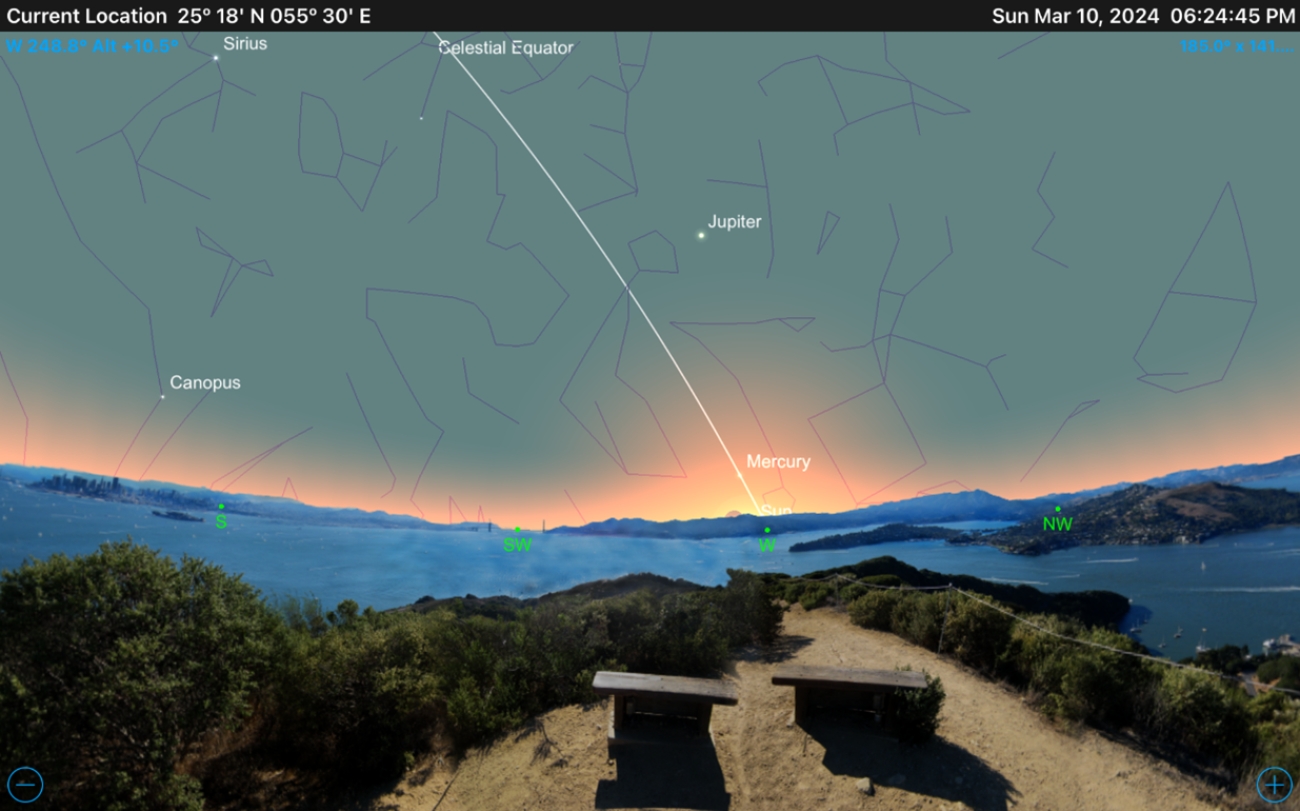The numbers may be different, but the conclusion is the same for almost all Muslim countries from the far East to the far West.
|
|
Sunday Mar. 10, 2024 |
Monday Mar. 11, 2024 |
|
Sun/Moon Data |
Sun/Moon Data |
|
|
New Moon |
1:00 pm |
-- |
|
Sunset (Azimuth) |
6:24 pm (2660) |
6:25 pm(2670) |
|
Moonset (Azimuth) |
6:34 pm (2650) |
7:42 pm (2740) |
|
Moon’s Altitude |
1.80 |
18.70 |
|
Moon’s Illumination (%) |
0.11+ |
2.29+ |
|
Lag Time (Minutes) |
10 |
77 |
|
Age (Hrs, Min) |
5h 24min |
29 h 25min |
Ilias Fernini’s Comment:
On March 10, 2024, an unusual celestial phenomenon will challenge the traditional methods of determining the beginning of Ramadhan 1445 AH. The simulation above shows a unique set of circumstances with the crescent Moon at an exceptionally young age and positioned at a remarkably low elevation during sunset. So when does Ramadhan 14445 AH start? Two situations:
Situation 1
For those countries that follow the simple criterion that New Moon has occurred before the sunset of Sunday, Mar. 10, 2024, for them, the Moon will have passed its new moon phase, suggesting that Ramadhan 1445 AH should commence on Monday, March 11, 2024.
Situation 2
However, for those who prioritize the actual visibility of the crescent, the situation presents a conundrum. The crescent Moon is so low on the horizon at the time of sunset on Sunday, March 10, that its true visibility (naked eye or telescope) becomes impossible. Consequently, adherents relying on authentic crescent sighting criteria may find themselves anticipating the commencement of Ramadhan on Tuesday, March 12, 2024, underscoring the nuanced and intricate nature of lunar observation in determining significant religious events.



